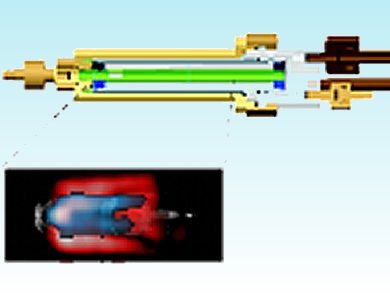Hyperpolarized (HP) 129Xe NMR spectroscopy — a method that increases the NMR signal of xenon by up to five orders of magnitude — has become a valuable tool in many fields of modern research, including medical imaging. This technique has been greatly enhanced by the xenonizer setup, which was introduced a few years ago by researchers at the Max Planck Institute for Polymer Research, Mainz, Germany, and consists of a hollow-fiber membrane module driven by xenon gas and solvent.
The suitability of different hollow-fiber membranes for improved xenon dissolution in blood has been tested by N. Amor, K. Hamilton and co-workers, RWTH Aachen University and Research Center Jülich, Germany. The authors designed and assembled xenonizers using four different types of commercially available fibers: CELGARD, OXYPHAN, OXYPLUS, and silclear. They found that CELGARD is favorable if the fluid under investigation is exposed to the xenonizer for a longer period, and if a predefined oxygenation level and pH value are maintained.
OXYPLUS fibers are the least appropriate for HP 129Xe dissolution while OXYPHAN fibers are best suited for applications requiring continuously dissolved HP 129Xe as the highest signals are achieved with this material.
- NMR and MRI of Blood-Dissolved Hyperpolarized Xenon-129 in Different Hollow-Fiber Membranes
N. Amor, K. Hamilton, M. Küppers, U. Steinseifer, S. Appelt, B. Blümich, T. Schmitz-Rode,
ChemPhysChem 2011, 12.
DOI: 10.1002/cphc.201100446


